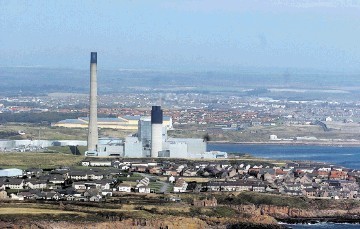
Scottish scientists have found cost-effective and reliable way to monitor the storage of the most common greenhouse gas, carbon dioxide (CO2), deep underground.
These findings are said to aid the development of Carbon Capture and Storage (CCS) technology.
The technique involves harnessing CO2 from power stations and industrial processes and storing deep underground, to prevent emissions from contributing to climate change.
The researchers studied different forms of oxygen in waters sampled from rocks deep below ground at CO2 storage sites in Australia, Canada, Germany and the USA.
They found that in each of these sites the reservoir waters changed their oxygen fingerprint when in contact with bubbles of trapped CO2.
Testing samples of water for this altered form of oxygen provides a simple way to measure the amount of CO2 stored within the rock.
The work shows that a large amount of injected CO2 is very quickly retained in the underground rocks.
The team says their technique provides an inexpensive monitoring solution, as they need only measure the CO2 injected into a site and water samples from before and after injection to find out how much of the gas has been trapped.
The research was carried out by the University of Edinburgh, a founding partner of Scottish Carbon Capture & Storage (SCCS), and the University of Calgary with assistance from Australian research organisation, CO2CRC.
The study, published in the International Journal of Greenhouse Gas Control, was supported by the UK Carbon Capture and Storage Research Centre.
Dr Sascha Serno, University of Edinburgh’s School of GeoSciences, who led the study, said: “Our results highlight the promising potential of using oxygen compositions to monitor the fate of CO2 injected underground.
“Our study shows that this tool has been effective in tracking the fate of CO2 in five different storage sites located around the world.
“The oxygen method we have developed is simple and cheap, and can be easily combined with other monitoring techniques for CCS projects in the UK and beyond.”
Dr Stuart Gilfillan, also of University of Edinburgh’s School of GeoSciences, the study co-ordinator, added: “Understanding the fate of CO2 injected into the underground for storage is essential for engineering secure CO2 stores.
“Our study shows that measurements of the oxygen compositions in the reservoir water and CO2 injected underground should be standard practice in future storage sites. These can be completed at minimal cost for the site operators and will provide reassurance on the security of storage of the injected CO2.”
Recommended for you
